Castles in Moray
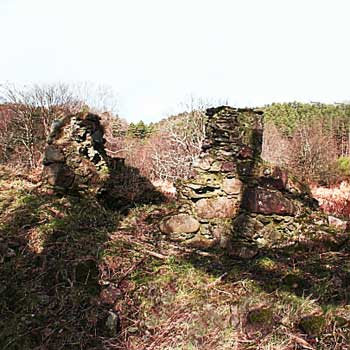
Aikenway Castle
Aikenway Castle is a ruin on a ricky outcrop overlooking the River Spey. Very little of the original structure remains. The castle was home to George Leslie of Drumbarrow, son of the 1st Earl of Rothes. Along with Rothes castle Aikenway controlled activity along this stretch of the river. Aikenway, also referred to as ‘Oakenway’ was probably built in the late 1400s but very little is known about it. The last known occupants were Margaret and Christian Leslie in 1729. Its reputed that the interior was lined with Oak panels from which the castle got its name.
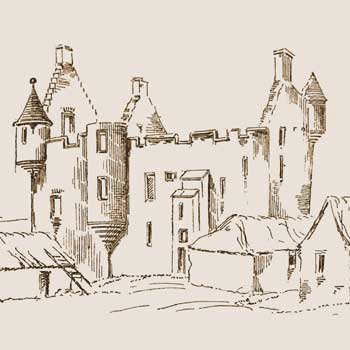
Asliesk Castle
Asliesk Castle is a late 16th century stone three storey L-plan tower house, which was the property of the Innes or Brodie family. What is left of the castle, the remains of the west wing mostly covered in thick ivy, lies to the north east of the town of Elgin. The stone bearings and original coat of arms from the castle were removed and are built into nearby farm buildings. In a hillock nearby is the site here MacBeth was repeated to have met the three witches that told him of his fate.
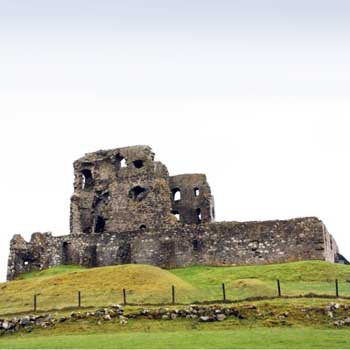
Auchindoun Castle
Auchindoun Castle is a 15th-century L-Plan tower castle located in Auchindoun near Dufftown. The present castle was constructed in the mid 15th century by Robert Cochrane. in 1489 the castle fell into the possession of Clan Ogilvie and in 1535 passed to Clan Gordon. in 1592 the castle was attacked and destroyed by Clan MacKintosh after a dispute over the murder of the Earl of Moray. The Ogilvies took the opportunity to reclaim the castle but passed back to the Gordons and the Earl of Huntly after the restoration of Charles II. in 1689 Viscount Dundee used the castle as a temporary headquarters during the Jacobite rising. by 1725 the castle was derelict and much of the stone removed for other buildings.
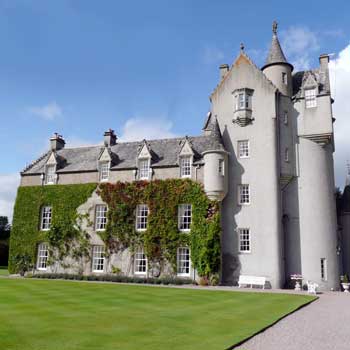
Ballindalloch Castle
Ballindalloch Castle, home to the McPherson-Grants since 1546, is an impressive castle in Banffshire. The original Z plan tower which sat on the site was burned by James Graham, the Marquis of Montrose. The castle was restored in 1645. Extensions were added in 1770 and 1850. The Castle, known as ‘The Pearl of the North’ has the good fortune of having an excellent stretch of the River Spey running through its grounds. The present Lady Laird, Mrs Clare Macpherson-Grant Russell still lives in the castle which is open to the public.
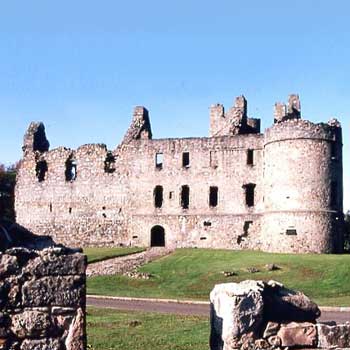
Balvenie Castle
Balvenie Castle was originally known as Mortlach. It was built by the Black Comyns in the 12th Century. After Robert the Bruce Murdered the Red Comyn on his way to the throne of Scotland the castle was abandoned. After this the castle and the attached lordship passed to the Douglass In 1440, William Douglas, 6th Earl of Douglas was murdered by King James II of Scotland and the castle and estates changed hands several times ending up with Sir John Stewart, the 1st Earl of Atholl The castle was abandoned around 1720 – the famous Balvenie distillery sits a short distance from the castle remains.
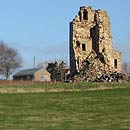
Blervie Castle
The ruins of Blervie sit about 5 miles from Forres. This tower was once part of a Z-plan fortalice belonging to the Dunbar family. Its ‘twin’, Burgie Castle, lies just to the north-east. Both were built in around 1600. There used to be an ancient castle on the site believed to have been built around the end of the 14th century.
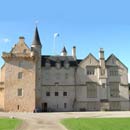
Brodie Castle
Situated near Forres, Brodie Castle was built by Clan Brodie in 1567 . Originally a Z plan , the castle was destroyed by fire in 1645 by Lewis Gordon of Clan Gordon, the 3rd Marquess of Huntly. In 1824, the castle was greatly expanded by architect William Burn and turned into a large mansion house in the Scots Baronial style. The Brodie family called the castle home until the late 20th century. It’s widely accepted that the Brodies have been associated with the land the castle is built on since around 1160, when it is believed that King Malcolm IV gave the land to the family. Ninian Brodie of Brodie (The Brodie of Brodie) died in 2003, and his son shortly after. Unfortunately, as his family had been unhappy with the transfer of the castle to the National Trust for Scotland, no Brodie now lives in the castle.
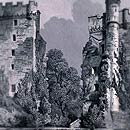
Burgie Castle
Burgie Castle sits around 3 miles east of Forres. The castle was built by the Dunbars in the 16th century. This castle was originally a Z-plan castle with towers on diagonally opposite corners of a rectangular central keep. The keep is in ruins and only one tower remains. A private trust has been set up to consolidate the building, funded by the Highland Buildings Preservation Trust. Burgie Castle is very similar to nearby Blervie Castle which was also built by the Dunbars in the 16th century.
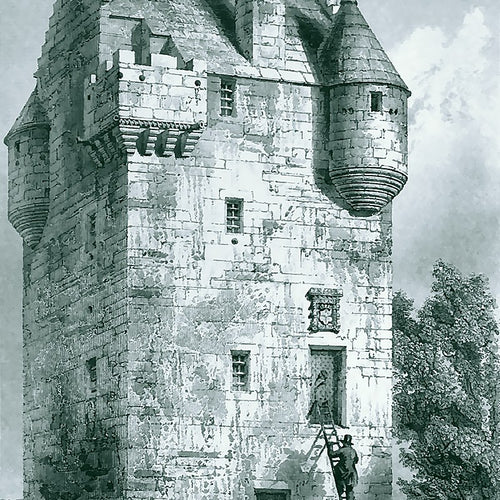
Coxton Tower
Coxton Tower was originally a late 16th century stone tower house, founded by the Innes family. In 1584 after a family dispute, the newly build square tower of Coxton was torched by the Laird of Innes. Alexander Innes rebuild the tower in the early 17th century and in the south wall over the first floor entrance, is a heraldic panel dated 1644.
Craigneach Castle
Craigneach Castle is in the parish of Knockando and the county of Morayshire. Nothing exists of this castle today apart from it’s name.
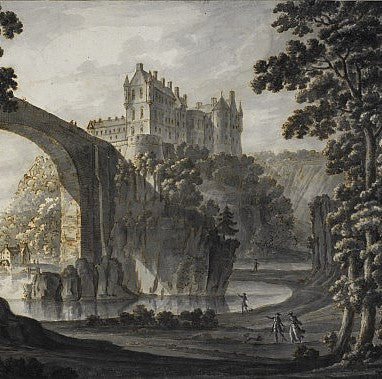
Cullen Castle
Cullen Castle originally had a motte and bailey, now only the motte remains. At Cullen Castle in Banffshire was the place of death of Elizabeth de Burgh, the wife of Robert the Bruce, but whether it was this Cullen Castle or an earlier castle on the site of Cullen House is unclear.
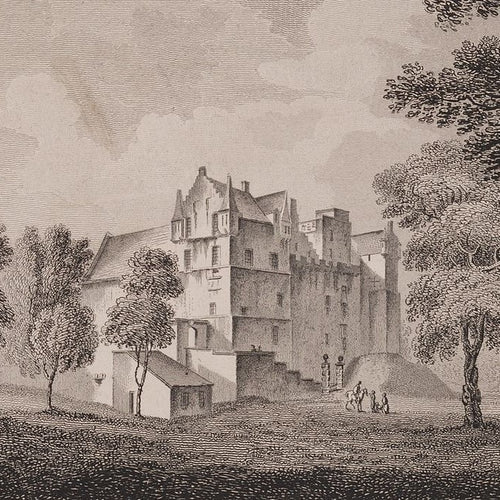
Darnaway Castle (Tarnaway Castle)
Darnaway Castle is located in Darnaway Forest, 3 miles from Forres. This was Comyn land, given to Thomas Randolph along with the Earldom of Moray by King Robert I. Sir Thomas Randolph probably built the first castle. The castle has remained the seat of the Earls of Moray ever since. Rebuilt in 1810, it retains the old banqueting hall, capable of accommodating 1,000 men. John, 3rd Earl, died at the Battle of Neville’s Cross in 1346 without male heirs, and the earldom went to Patrick Dunbar, who was the husband of one of John’s daughters. The male line of the Dunbars failed around 1430, and the earldom went to the Douglases. When Archibald Douglas, Earl of Moray died in battle on May 1, 1455, fighting with his brothers against King James III, who had decided to curb the power wielded by the Douglases, the Moray title and estates were forfeited along with various other Douglas possessions. It now passed to the Murrays, and then to the Stuart family, with whose descendants it remains. To the south of the castle, where the River Findhorn rushes through a gorge, Randolph’s Leap commemorates the sort of long-jumping usually associated with Rob Roy MacGregor. The castle is still occupied.
Deskie Castle
The location of this castle is not completely known. Local traditions place Deskie Castle on a scarped and levelled knoll near Bridgend of Livet. The knoll lies about half way up a boggy slope near the base of the Hill of Deskie. It’s name is preserved in a child’s rhyme once popular in the area: ‘Glenlivet it has castles three, Drumin, Blairfindy and Deskie’.
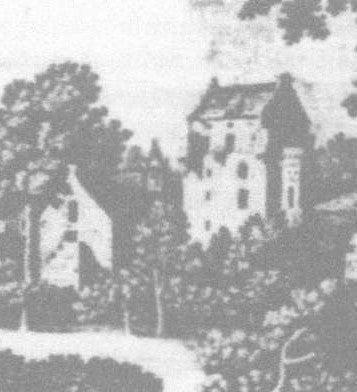
Deskford Tower
This ruined medieval tower was but in the late 14th Century by the Sinclairs of Findlater and Deskford, a branch of the St. Clairs of Roslyn near Edinburgh. The tower was four storeys rising above a massive barrel-vaulted entrance chamber. he last of this line, Sir John Sinclair, resided in Findlater Castle on the cliff tops until tragedy struck. His only son fell from the arms of his nurse and was dashed to death on the rocks below. The nurse, we are told, in her grief, threw herself to the same fate. The family moved inland to Deskford Castle, but further tragedy awaited them. In 1411, Sir John Sinclair was killed at the battle of Harlaw, leaving no male heir. The estates of Deskford and Findlater were inherited by his eldest daughter, Margaret, who married Sir William Ogilvie in 1437, thus bringing to an end the Sinclair line and sowing the seed of the Seafield dynasty.
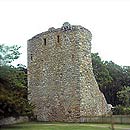
Drumin Castle
Now in ruins, Drumin Castle is a tower house near Glenlivet, Moray. The castle is situated on a ridge above the junction of the Livet and Avon Rivers. The lands were granted by King Robert II to his son Alexander Stewart in the early 1370s. It passed from the Stewart family to the Gordon family in 1490. The castle was abandoned in the 18th century and fell into disrepair.
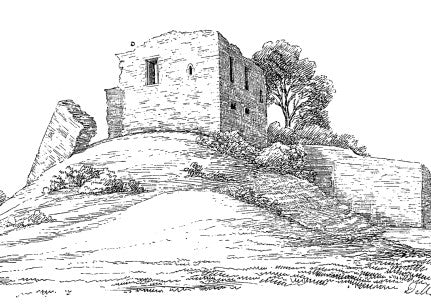
Duffus Castle
Near Elgin, Duffs Castle was originally a motte-and-bailey castle. The castle was in use from 1140 to 1705. During this time it underwent many alterations. At the death of the 2nd Lord Duffus in 1705, the castle had become totally unsuitable as a dwelling and so was abandoned.
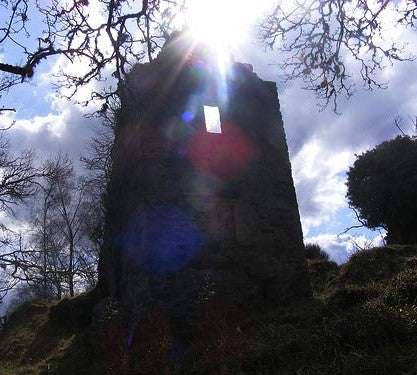
Dunphail Castle
Five headless ghosts are supposed to have haunted Dunphail Castle near Forres. This was a Cummings Clan Castle and was under seige from the Earl of Moray. Five of the defenders of the castle fought their way out to re-supply their comrades with food. But when they returned with grain they were captured by the Moray men and beheaded; their heads were thrown to the castle defenders. Later five headless skeletons were found, buried in a mound or barrow outside the castle.
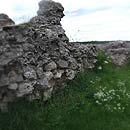
Elgin Castle
Built near Elgin in the 12th Century, Elgin Castle is now in ruins. Elgin was created a royal burgh by King David I of Scotland in 1136. The castle, once a royal castle, was built as a motte and bailey castle. King Edward I of England captured the castle and stayed at the castle during 1296 and in 1303. It was destroyed by King Robert I of Scotland in 1308, after two previous unsuccessful attempts to capture the castle. The castle was never rebuilt and fell into ruins.
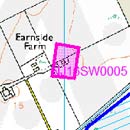
Earnside Castle
Nothing remain of Earnside Castle. Also nothing is really known about this Castle except that it was built by the Cumyns of Altyr about 1450. Earnside Castle is in the parish of Alves
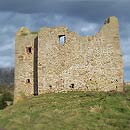
Findochty Castle
One of the earliest references to Findochty is in 1440, in which year the King granted Findachtifeild to John Dufe, son of John Dufe. The lands passed from the Duffs to the Ogilvies of Findlater and subsequently, in 1568, the Ord family acquired the manor, port, custom and fishers’ lands of Findochty, and later built the House of Findochty, known as Findochty Castle, now a ruin, which stands to the west of the village. Findlochty Castle is an L-plan keep dating from the 15th century. The Moor was the scene of the Battle of the Bauds in 961 AD when the Norse vikings led by Eric of the Bloody Axe, were routed by the Scots.
Forres Castle
Forres Castle was a fort and castle built near Forres, Scotland. The fort was destroyed in 850 by Vikings. Forres was created a royal burgh by King David I of Scotland in 1140. The castle, once a royal castle, was built as a motte and bailey castle and was strengthened in the 14th century. It was demolished in 1297 by the adherents of Wallace. King William the Lion and King Alexander II of Scotland visited and stayed at the castle. King David II of Scotland stayed at the castle in 1346. It was burned by Alexander Stewart, Earl of Buchan in 1390. Held by the Dunbars of Westfield until the 17th century, it fell into ruins. Nothing now remains above ground. A public park is now where the Castle used to be, just off Bridge Street in Forres.
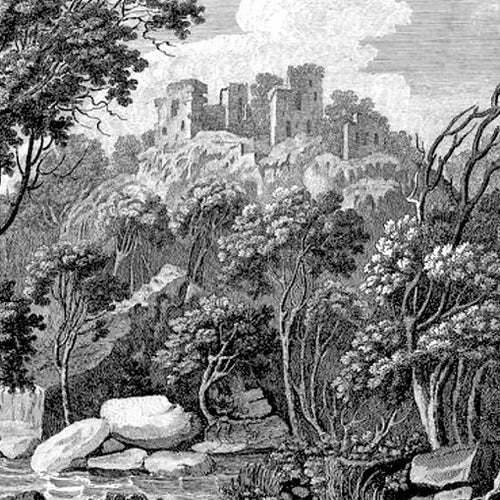
Gauldwell Castle
Gauldwell Castle (also known as Gallval Castle) has most probably existed on this site since the 12th century, however the present ruins are believed to date from the 13th century, with later additions.
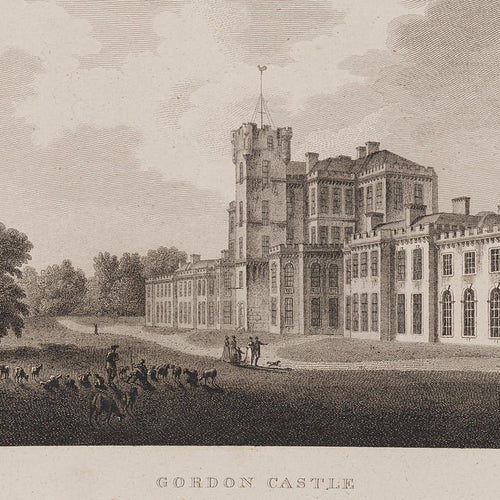
Gordon Castle
Located in Gight, near Fochabers a place which historically is known as the Bog-of-Gight, Gordon Castle was the principal seat of the Dukes of Gordon. Following 18th-century redevelopment, it became one of the largest country houses ever built in Scotland, although much has since been demolished. The original castle was built by George Gordon, 2nd Earl of Huntly in the 1470s and enlarged by his grandson. John Adam (architect) was commissioned with the French architect Abraham Roumieu to redesign the castle in 1764 but this did not come to fruition. Eventually the commission fell to the lesser-known Edinburgh architect, John Baxter, who rebuilt it in 1769 for Alexander Gordon, 4th Duke of Gordon. The central four storey block incorporated a six-storey medieval tower called the Bog-of-Gight, and was flanked by a pair of two-storey wings. The main facade was 568 feet (173 metres) long. Most of the castle has been demolished, but the Bog-of-Gight and one of the wings—now a detached medium sized country house in its own right—survive.
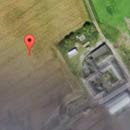
Hempriggs Castle
This castle is supposed to have been built in the reign of James the Second and was for centuries an heritage of a branch of the Dunbar family. It was completely demolished about 40 years ago (ie. 1830) and the stones were used in building the present farmsteading. No trace of this castle now remains. The site of Hempriggs Castle lies in arable field to the west of the farm. It was said to have been built during the reign of James II and belonged to a branch of the Dunbar Family.
Inverugie Castle
Not to be confused with the Inverugie Castle in neighbouring Aberdeenshire, this Inverugie Castle was built in the 1300s, five miles north-west of Elgin. It was a strong hold for Clan Young, before the land passed to the Mortimer family. There are no remains of Inverugie Castle, with the stones having been cleared away by around 1824.
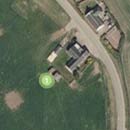
Kilbuaick Castle
Kilbuaick Castle is in the parish of Alves, nothing remains. This castle was supposed to have been built in the reign of James the Second and was inhabited by a branch of the Dunbar family. It was totally demolished in the early part of the 19th century, the stones and slates being used in the building and roofing of the present farm-steading.
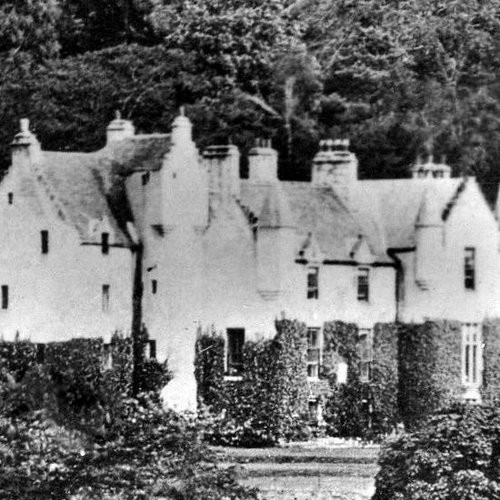
Kininvie Castle
Kininvie appears to have been reconstructed at the end of the 16th century, but the walls are probably of older date. The original structure is said to have been erected in 1480. The oldest part of Kininvie House, probably the 16th century reconstruction mentioned by MacGibbon and Ross, is the W wing containing a square tower containing a staircase (see photo on illustration card). This wing has been modernised and harled to conform with the remainder of the house, which, according to Shaw (L Shaw 1882) was added by Archibald Young Leslie in 1840. No trace, and no local knowledge of the original structure allegedly built in 1480.
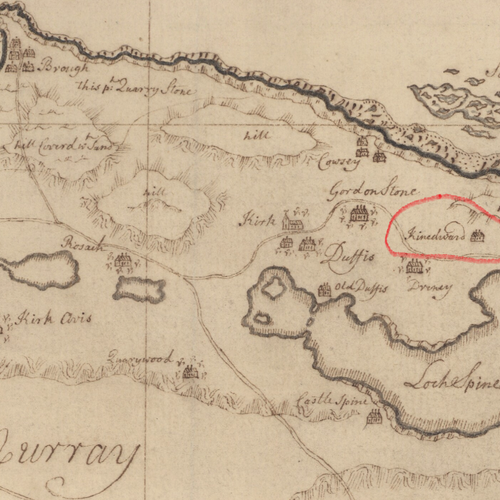
Kinneddar Castle
Kinneddar Castle in Moray, Scotland was the residence of the bishops of Moray from c.1187 and its first documented incumbent was Bishop Richard (1187 – 1203). Bishop Archibald enlarged or rebuilt the castle in c. 1280 and it continued to be used by the bishops until the late 14th century. Nothing now exists of the castle except one fragment of a rubble wall that is integrated into the Kinneddar kirkyardboundary wall. Loch Spynie, then open to the sea and much larger than its present size, came close to the castle and its marshes surrounded the castle enclosure on three sides. The ruinous structure still existed in 1734 and was described as being a central tower enclosed by two concentric hexagonal walls which made it unique in Scottish terms. Adjacent to the castle grounds stood the ancient kirk of Kinneddar which became the second cathedral of Moray following the move of the bishop’s seat from Birnie. The Pictish sculptures found in the vicinity of the castle and kirkyard point to the area being an important 8th century Christian centre (see Culdees) and may have been a principal location for the conversion of the Picts.
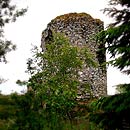
Pitlurg Castle
Pitlurg Castle probably dates from the late 16th century, but was in ruins by the second half of the 19th century. Pitlurg Gordons descended from Jock o’ Scudargue, near Rhynie, and held property until 1724. A descendent, General Gordon, 1815, took the name for his estate of Leask and Birness, Formartine.
Quarrelwood Castle
Located in in the parish of Spynie, this castle is supposed to have been erected by Sir Robert Lauder between the years 1333 and 1360. He died Shortly after this and was Suceeded by Sir Robert Chisholm said to have been the founder of the Still flourishing family of that name in Strathglass. The Sutherlands possess Quarrelwood until after the year 1700, when James Lord Duffus granted a Wadset of it to William Duff of Dipple, and he afterwards acquired the estates absolutely. Mr Duffs daughter married The Honourable William Sutherland of Roscommon, third Son of James Lord Duffus. He was engaged in the rebellion of 1715 and was forfeited, and died about 1718. His widow Lady Roscommon, occupied this castle as a residence. Nothing remains of the castle.
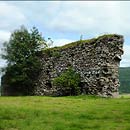
Rothes Castle
Hardly anything remains of Rothes Castle, only a single bit of wall. Not much is known about this castle. Originally the lands in the area had been granted to the De Pollok family in the late 1100s by William I, and it seems that in about 1200 Peter de Pollok was commanded by William to build a castle where it could control this stretch of the valley of the River Spey. The Castle was originally built as a keep of several storeys surrounded by a courtyard and outer wall. On 29 July 1296 Edward I of England, the Hammer of the Scots, stayed at Rothes Castle. In the 1390s the castle and lands passed to the Leslie family, who later became Earls of Rothes. Rothes Castle was damaged in the 1640s during an attack by Covenanters, and was again damaged by the Marquis of Montrose and his Royalist Army in pursuit of Covenanters in 1645. These attacks appear to have put the castle beyond economical repair, and in 1660 the decision was taken to demolish what was left to prevent its use by “thieves and bandits” who were using it as a base to prey on the area. Much of the stone was later reused when Rothes developed as a planned township in the years after 1766.
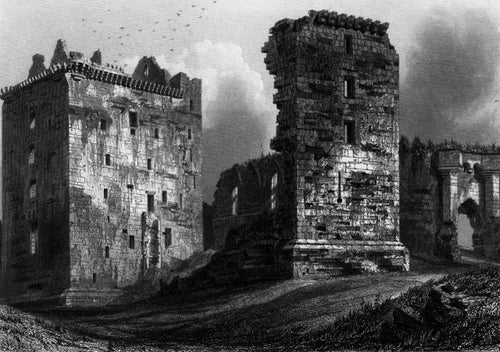
Spynie Palace (also known as Spynie Castle)
For five centuries until 1686, Spynie Palace was the fortified seat of the bishops of Moray. The palace dates back to the late 12th Century where it would have been a wooden structure. The stone buildings first appeared in the 13th century with the establishment of what was thought to have been a chapel. The first recorded mention of the castle is in a document held in the British Museum. This manuscript dates from the early 14th century but appears to have been compiled between 1292 and 1296 and was apparently for the use of English administrators during King Edward I of England’s occupation of Scotland. The first writ issued at Spynie Castle was in 1343 and is recorded in the Register of Moray. The Wolf of Badenoch took the castle as instructed by King Robert III. The King took procession and The Wolf of Badenoch was made warden of the castle. After the election of the new bishop, the King issued a writ on 3 May 1398 to Buchan to hand over the castle and contents to Bishop William. Bishop John de Winchester was thought to be responsible for making changes to the castle. On 29 July 1587, King James VI gave the castle and estate to Alexander Lindsay, 1st Lord Spynie; and they remained in his hands until he surrendered them back to the Crown in December 1605. During this period in 1595, Spynie was one of the castles that had additional fortification installed as protection against a perceived threat from the Spaniards. Later Bishop John Guthrie, a royalist, wouldn’t subscribe to the Covenent prepared the castle for a siege which duly arrived in 1640 in the form of Covenanter Col. Sir Robert Monro and his 800 men. Guthrie surrendered the castle immediately on 16 July. Following the restoration of the Episcopy to the Scottish Church in 1662 ownership of the castle passed back to the church, but it was starting to fall into decay. Parliament granted Bishop Murdo MacKenzie £1000 for repairs and this sustained the building up to 1689[when the last occupant, Bishop William Hay was expelled after refusing to take an oath of allegiance to King William and Queen Mary. The palace passed into the hands of the Crown and the fine iron work and wood carvings removed. Local people plundered the walls for stonework for building works until the early 19th century when the Crown stopped the quarrying and instituted a maintenance policy.
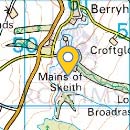
Skeith Castle
Skeith Castle is in the parish of Deskford and the county of Banffshire. The site of this castle is on the West side of the present farm & steading a small vestige of the ruin forms a part of the northern end garden wall.
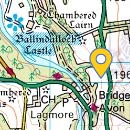
Castle Stripe
Castle Stripe is in the parish of Inveravon and the county of Banffshire. The remains of a tower-house, probably of fifteenth-century date, lie about 300m east of the River Avon. It may have been the seat of the Grant family and the predecessor of nearby Ballindalloch Castle. This tower house was built in a typically defensive position, occupying the top of a steep bank leading down to a burn. The remains, which are now mainly covered in turf, indicate that the building measured about 15m by 9m internally, with walls that were about 2.5m thick. An area of disturbed ground to the north-west and a short stretch of wall leading west may indicate the remains of a courtyard or outbuildings.
Tronach Castle
Nothing remains of Tronach Castle. It was situated on an impressive rocky pinnacle on the coast. The outline of a rectangular structure can be seen from the air. Can not find any information on the history of this castle.
